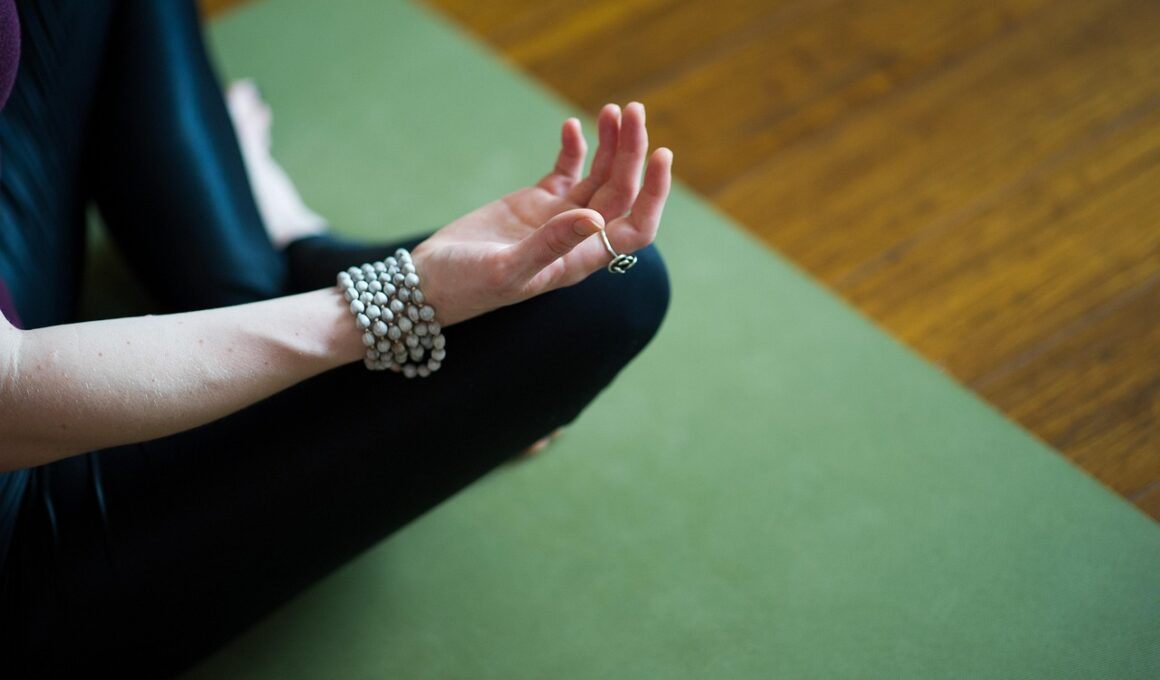Using Mindfulness to Improve Workout Focus and Tracking Accuracy
In today’s fast-paced world, integrating mindfulness into fitness routines can significantly enhance both focus and accuracy in tracking workouts. Being present during exercise allows individuals to connect deeply with their bodies and movements. This heightened awareness can lead to improved performance and better results. Mindfulness encourages practitioners to pay attention to every detail, from breathing patterns to muscle engagement, which fosters a stronger mind-body connection. By focusing on movement and form rather than distractions, each workout becomes more productive and engaging. Incorporating mindful techniques such as meditation or breathwork can further augment this experience. Practitioners can develop a more profound understanding of their physical limits and capabilities. This awareness not only helps in mastering new techniques but also prevents injuries caused by distraction or improper form. Tracking fitness habits mindfully enables individuals to set realistic goals based on genuine self-assessment rather than external pressures. It promotes a positive relationship with fitness, leading to long-term adherence and overall well-being. Therefore, merging mindfulness and fitness practices creates a holistic approach to better physical, mental, and emotional health for individuals from all backgrounds.
One effective method to integrate mindfulness into tracking fitness habits is by utilizing fitness journals or apps. This practice encourages individuals to reflect on their progress and physical feelings during workouts. Writing down thoughts can clarify any emotional responses to workouts, creating awareness around one’s motivations and obstacles. Additionally, using technology, such as heart rate monitors or fitness trackers, offers real-time feedback that can enhance mindfulness. These tools help users become aware of their body’s responses during workouts and foster improvements with each session. Moreover, setting aside specific times for mindful reflection, such as post-workout reviews, further solidifies this connection. Participants can assess their performance and potentially adjust future strategies based on how they felt. Engaging in breath awareness before and during workouts can also significantly improve focus and effectiveness. Taking just a few moments to breathe deeply helps clear the mind, making it easier to concentrate on physical exertion. Mindfulness-based practices induce not only mental clarity but also physical readiness, which leads to higher quality workouts and better tracking outcomes. Therefore, the benefits of mindful tracking reach beyond immediate workouts to promote sustained fitness journeys.
The Role of Environment in Mindful Fitness
A conducive environment plays a crucial role in facilitating mindfulness during workouts and tracking habits. An environment that minimizes distractions and promotes calmness can enhance focus and ease during exercise sessions. Natural lighting, minimal noise, and a welcoming atmosphere invite individuals to engage deeply with their routines. Practicing mindfulness in serene environments not only helps with concentration but also fosters motivation and enjoyment. Outdoors fitness activities can be particularly beneficial, as natural surroundings inherently encourage mindfulness. People often feel more connected to their workouts when surrounded by nature, allowing them to experience each movement in a more profound way. Additionally, incorporating elements like soft music or ambient sounds can enhance the overall experience. Creating a personalized space at home for workouts can foster comfort and support mindfulness practice. Individuals can design this environment to suit their personal preferences, which may involve dim lighting or the presence of motivational quotes. Choosing the right environment should align with one’s unique goals to enable consistent practice. This way, mindfulness serves as a crucial tool in optimizing both performance and tracking accuracy during fitness endeavors.
Another important aspect of practicing mindfulness during workouts includes integrating body awareness techniques. These techniques can help individuals stay grounded throughout their fitness journey and facilitate a more accurate understanding of their bodies’ capabilities. For example, focusing on how different muscle groups feel during a workout allows individuals to fine-tune their movements, creating lasting improvements in technique and form. Such awareness helps to minimize the risk of injury and accelerates recovery time. By effectively listening to the body’s cues, practitioners are better equipped to adapt their workouts to suit their specific needs and goals. Moreover, improving body awareness can cultivate a deeper appreciation of the physical self. This increased connection fosters positive self-talk and confidence, essential components of consistency and perseverance in any fitness journey. Additionally, incorporating yoga or Pilates can significantly enhance body awareness, as these disciplines emphasize mindful movement and breathing. As individuals progress through their routines, maintaining this heightened awareness contributes to long-term fitness outcomes and satisfaction. Ultimately, the intersection of mindfulness and body awareness creates a robust foundation for engaging, effective, and sustainable workout experiences.
Setting Realistic Goals through Mindfulness
Mindfulness not only enhances workout focus but also aids in setting realistic and achievable fitness goals. By encouraging honest self-assessment, mindfulness empowers individuals to acknowledge their limitations while celebrating small victories. This aspect is crucial in preventing discouragement and burnout, which can often arise from unrealistic expectations. Individuals can set specific milestones based on their current fitness level rather than succumbing to pressures from social media or peers. Practicing mindfulness promotes a more compassionate approach to personal development in fitness, allowing individuals to embrace their unique journeys without judgment. Furthermore, tracking these achievements mindfully enables deeper reflections on personal progress, as well as adjustments to future goals based on experience. Keeping a mindful record of exercises and emotional responses provides invaluable insights into what feels rewarding or challenging. By documenting these insights, individuals can make informed decisions regarding their fitness paths and further strengthen their commitment. This conscious approach ultimately fosters a healthy balance between ambition and realism, setting people up for success in their workouts while ensuring that they feel confident and empowered in the process.
Consistency in practicing mindfulness within fitness habits is key to achieving long-term benefits and improvements. Over time, individuals who integrate regular mindful practices into their routines will find it easier to focus on their workouts and engage more fully with their goals. Creating a structured schedule that includes both physical training and mindfulness activities can considerably enhance this integration. For instance, starting each workout with a brief meditation or mindful breathing can set a positive tone for the session ahead. In addition, regularly revisiting and refining personal fitness goals introduces a sense of purpose in workouts. This strategy fosters a deepening understanding of both progress and motivation, feeding into a positive feedback loop. Such awareness can inspire individuals to push through plateaus or obstacles they may encounter. Furthermore, embracing challenges mindfully cultivates resilience, an essential trait for any fitness endeavor. Practitioners can learn to view setbacks as opportunities for growth and self-discovery. Ultimately, establishing a consistent mindfulness practice within fitness routines not only yields tangible results but also transforms the overall experience into one of joy and fulfillment.
Conclusion on Mindfulness in Fitness Tracking
In conclusion, incorporating mindfulness into fitness routines and tracking habits offers numerous advantages for practitioners. Enhancing focus, ensuring accuracy, and promoting a positive mindset contribute significantly to overall well-being. When individuals engage fully in their workouts, they tap into immense potential, pushing past limits and becoming more attuned to their bodies. This process not only improves performance but also fosters a healthier relationship with fitness. As mindfulness becomes part of one’s fitness journey, the impact can be transformative. Setting realistic goals, cultivating body awareness, and embracing consistency lead to sustained progress over time. By adopting a mindful approach, individuals can reduce the pressures often associated with fitness and instead prioritize self-compassion and growth. Ultimately, the intersection of mindfulness and fitness opens up new avenues for exploration and achievement in personal health journeys. Therefore, those who practice mindfulness will likely find greater satisfaction and success in their fitness endeavors. Embracing these principles lays the groundwork for both personal transformation and long-term commitment. Begin today, and witness the profound difference mindfulness can make in your workout sessions.


